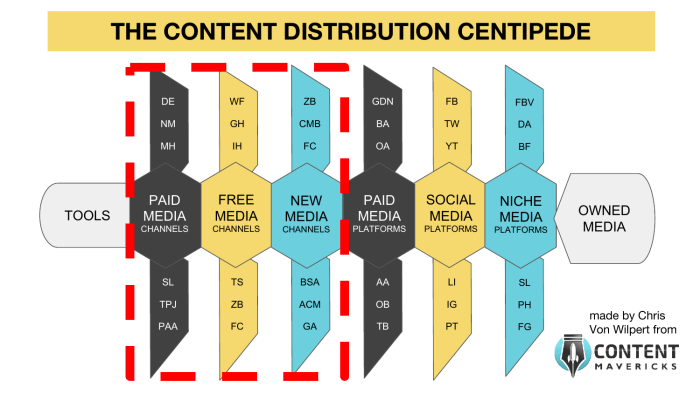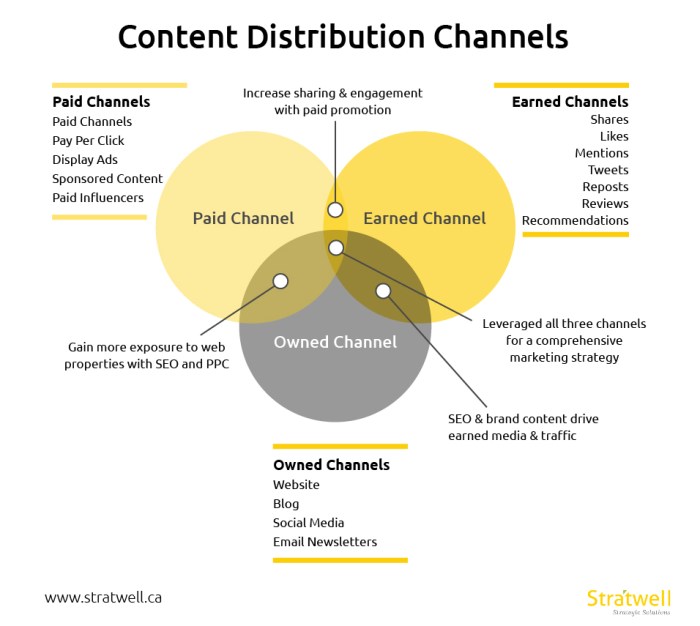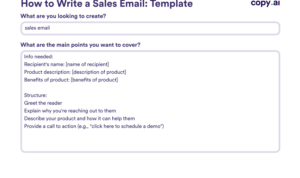Content Distribution Channels take center stage in the digital realm, offering a gateway to endless possibilities and connections. Dive into a world where choosing the right channels can make or break your content strategy, shaping the narrative for your target audience.
Overview of Content Distribution Channels

Content distribution channels refer to the various platforms and methods used to share content with a specific audience. These channels help content creators reach their target audience effectively and efficiently.
Popular Content Distribution Channels
- Social Media Platforms: Platforms like Facebook, Instagram, Twitter, and LinkedIn are popular channels for sharing content due to their large user bases and diverse demographics.
- Streaming Services: Platforms such as Netflix, Hulu, and Amazon Prime Video are used to distribute video content to subscribers around the world.
- Email Marketing: Sending newsletters and promotional content via email is a common method of distributing content directly to interested audiences.
- Websites and Blogs: Creating and maintaining a website or blog allows content creators to share articles, videos, and other content with their audience.
Choosing the right content distribution channels is crucial for reaching the intended audience and maximizing the impact of the content.
Importance of Choosing the Right Content Distribution Channels
- Targeted Reach: Selecting the appropriate channels ensures that the content reaches the specific audience that is most likely to engage with it.
- Engagement Metrics: Different channels offer various ways to measure engagement, such as likes, shares, comments, and click-through rates, allowing creators to assess the performance of their content.
- Brand Consistency: Using consistent channels helps maintain brand identity and messaging across all platforms, reinforcing brand recognition and loyalty.
- Cost-Effectiveness: By focusing on channels that are most effective for the target audience, creators can optimize their resources and maximize the return on investment.
Types of Content Distribution Channels
When it comes to distributing content, there are three main types of channels to consider: owned, earned, and paid. Each type has its own set of advantages and disadvantages, and the key is to choose the most effective channels based on your content goals.
Owned Content Distribution Channels
Owned content distribution channels are platforms that you have complete control over, such as your website, blog, or social media profiles. The main advantage of owned channels is that you have full creative freedom and can tailor the content to your target audience. However, the downside is that it may take time to build an audience and generate traffic to these channels.
Earned Content Distribution Channels
Earned content distribution channels involve getting your content featured on third-party platforms, such as media outlets, influencers, or other websites. The advantage of earned channels is that they can help you reach a larger audience and build credibility through social proof. On the other hand, you have less control over how your content is presented and shared on these platforms.
Paid Content Distribution Channels
Paid content distribution channels involve investing in advertising or sponsored content to promote your content. The main advantage of paid channels is that they can help you reach a targeted audience quickly and increase visibility. However, the downside is that it can be costly, and the results may not always be guaranteed.
Selecting the most effective content distribution channels depends on your specific goals. If you’re looking to build brand awareness and reach a broader audience, paid channels may be the way to go. On the other hand, if you want to establish credibility and trust with your audience, earned channels could be more effective. Owned channels are great for long-term sustainability and building a loyal following over time. It’s essential to evaluate your goals and resources to determine the best mix of distribution channels for your content strategy.
Strategies for Utilizing Content Distribution Channels
Utilizing content distribution channels effectively is crucial for reaching a wider audience and maximizing the impact of your content. Here are some strategies to optimize your content distribution channels for maximum reach:
Optimizing Content Distribution Channels
When distributing content, it’s important to tailor your message to each specific channel. What works on one platform may not work on another, so make sure your content is optimized for each channel’s audience.
- Engage with your audience: Interact with your followers, respond to comments, and encourage discussions to build a strong relationship with your audience.
- Utilize multiple channels: Don’t rely on just one platform. Utilize a mix of social media, email marketing, and other channels to reach a diverse audience.
- Use analytics: Monitor the performance of your content distribution channels using analytics tools. Track metrics such as reach, engagement, and conversion rates to optimize your strategy.
- Create shareable content: Develop content that is easily shareable to increase your reach through word-of-mouth and social sharing.
- Collaborate with influencers: Partner with influencers in your niche to reach a broader audience and increase your credibility.
Integrating Multiple Channels
Integrating multiple channels into your content distribution strategy can help you reach a larger and more diverse audience. Here are some tips for creating a cohesive strategy:
- Consistent branding: Maintain a consistent brand voice and visual identity across all channels to create a cohesive brand image.
- Cross-promotion: Promote your content across different channels to increase visibility and drive traffic to your website or other platforms.
- Content repurposing: Repurpose your content for different channels to maximize its reach. For example, turn a blog post into a video or infographic for social media.
- Targeted campaigns: Tailor your content to the specific audience of each channel to ensure relevance and engagement.
Role of Analytics
Analytics play a crucial role in monitoring the effectiveness of your content distribution channels. By analyzing data, you can gain insights into what works and what doesn’t, allowing you to make informed decisions to optimize your strategy.
- Track key metrics: Monitor metrics such as traffic, engagement, and conversion rates to gauge the performance of your content distribution channels.
- A/B testing: Experiment with different strategies and content formats to see what resonates best with your audience, using A/B testing to compare results.
- Adjust and optimize: Use analytics data to make data-driven decisions and continuously optimize your content distribution strategy for better results.
Emerging Trends in Content Distribution Channels

In the ever-evolving digital landscape, new trends in content distribution channels are constantly emerging, reshaping the way content is shared and consumed. These trends are heavily influenced by advancements in technology and the increasing dominance of social media platforms in everyday life.
Rise of Streaming Platforms
Streaming platforms like Netflix, Hulu, and Disney+ have revolutionized the way we consume content, offering on-demand access to a vast library of movies, TV shows, and original programming. These platforms have become a primary channel for content distribution, challenging traditional cable TV and movie theaters.
Influencer Marketing on Social Media
Social media platforms such as Instagram, YouTube, and TikTok have become powerful tools for content distribution through influencer marketing. Brands collaborate with popular influencers to reach their target audience effectively, leveraging the influencers’ large following and engagement rates.
Augmented Reality (AR) and Virtual Reality (VR)
Advancements in AR and VR technology are opening up new possibilities for content distribution. Companies are exploring immersive experiences through AR filters on social media platforms and VR content for virtual events and product demonstrations. These technologies are shaping the future of content distribution channels.
Voice-Activated Devices and Smart Speakers
The rise of voice-activated devices like Amazon Echo and Google Home presents a new avenue for content distribution. Users can access news updates, podcasts, and audio content through voice commands, changing how content is delivered and consumed in the digital age.
Blockchain and NFTs
Blockchain technology and non-fungible tokens (NFTs) are transforming the distribution of digital content, providing creators with new ways to monetize their work. NFTs allow artists, musicians, and other creators to sell unique digital assets directly to consumers, bypassing traditional distribution channels.
Conclusion
As technology continues to advance, content distribution channels will continue to evolve, providing creators and brands with new opportunities to reach their target audiences in innovative ways. Adapting to these emerging trends is essential for staying relevant and competitive in the ever-changing digital landscape.





